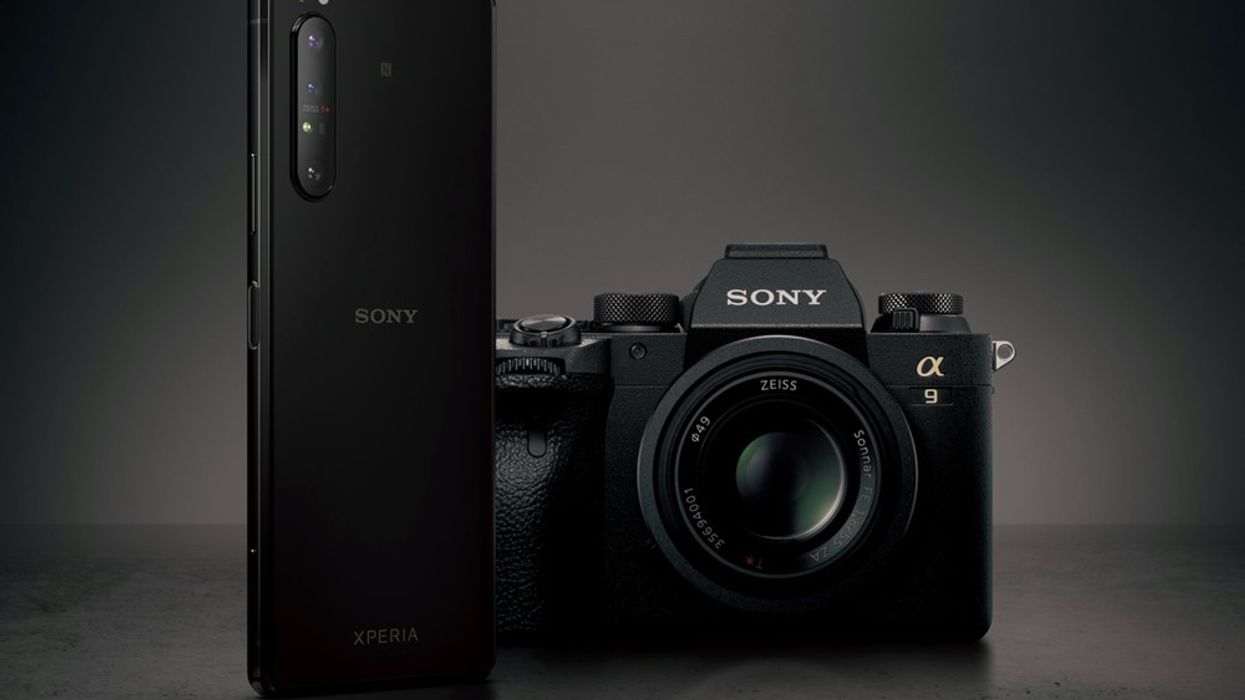Sony Solidifies Mobile Filmmaking with Xperia Smartphones
Sony smartphones further blur the line between pro and mobile filmmaking.

In 2010, I was invited to basically what amounted to a think tank group. One of the big camera manufacturers invited several people who work, cover, and are part of the film and television industry to share thoughts about the future of filmmaking.
A topic myself and another person from EVS pushed was mobile filmmaking and how the technology found on larger cameras will eventually be incorporated into cell phones. The skepticism in the room was palpable, and odd, because feature-length films were already being shot on them. The writing on the wall was clear. It wasn't a matter of if, but when.
From SMS Sugar Man in 2008 and Night Fishing in 2011 to Sean Baker's Tangerine and Modern Family's "Lost Connection," mobile filmmaking is a viable option for storytelling. Sony has upped the game with the two new smartphones, the Xperia 1 II and Xperia Pro.
When Sony moved from APS-C to a full-frame sensor with its a7, a7R, and a7S, the Alpha series took off. The larger sensor has been a favorite among video shooters and still photographers ever since. For cinematographers looking for better image quality, the Sony CineAlta series, including the VENICE and F65 have been go-to options. Now, Sony is taking technology from both and bringing it to its smartphones.
Key Features
- Snapdragon 865 Mobile Platform
- 6.5" 21:9 CinemaWide 4K HDR OLED
- 8GB of RAM
- Up to 20fps AF/AE
- Real-Time Eye AF for Humans and Animals
- 4,000 mAh Battery Capacity
- 3.5mm Audio Jack
- Water Resistant
Sensor & Display
Sony bumped its Emxor RS image sensor by roughly 50% for better image quality and combined a BIONZ X engine for increased light sensitivity and less noise. Both the Xperia 1 II and Xperia Pro tout a 6.5" 21:9 CinemaWide 4K HDR OLED with a contrast ratio of 1000,000:1. The display is 10-bit using 8-bit + 2-bit FRC with deeper blacks and more natural colors using standards like DCI-P3 100%, BT.2020, and D65 White Point.
Camera
The phone features three backside 12MP lenses at 16mm F2.2, 24mm F1.7, and 70mm F2.4 with ZEISS T* coating. An 8MP front-facing camera has a maximum aperture of F2.0. Autofocus was developed with the Alpha engineers and features eye autofocus for both humans and animals. It offers up to 20fps continuous shooting with AF/AE on the 24mm camera and up to 10fps AF/AE on the 16mm and 70mm.
Video Recording
The phones feature Cinematography Pro “powered by CineAlta” where users have control over features like framing guides, shutter speed angle, touch autofocus, auto exposure, and more. It supports 4K HDR recording at 24, 25, 30, and 60fps as MP4 (AVC264 or HEVC265). It also supports 120fps.
Each focal length has different video stabilization. The 24mm and 70mm use a hybrid OIS/EIS stabilization and the 16mm has EIS. Sony also included eight different color profiles to use with videos.
Xperia Pro
The Xperia Pro shares most of the same characteristics of the Xperia 1 II. However, there are differences. It will have a default storage of 512GB, supports 5G mmWave connectivity, and will have a micro HDMI port alongside its USB-C port. Sony didn't go into much detail about what the HMDI port can actually do, but there are some interesting possibilities.
For one, the HDMI will allow you to attach a camera and use the phone as a monitor. But what if it can do more? What if the phone can record the camera source acting as an external hard drive. Or what if the signal can be transmitted for a live-stream. Sony has manifested some creativity here and we like where they're headed. Maybe Apple will jump on board and start offering Apple ProRes RAW in its iPhones. Crazy? Well, it's only a matter of time, not if.
Pricing & Availability
Sony has yet to confirm U.S. pricing and a launch date, but in Europe, the Xperia 1 II will €1199. No word on the price of the Xperia Pro or release date.
Source: Sony














